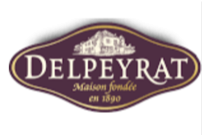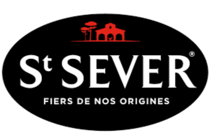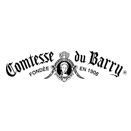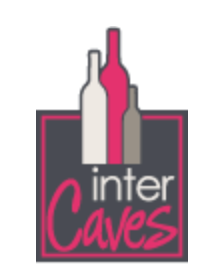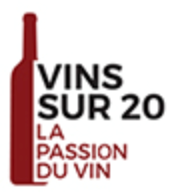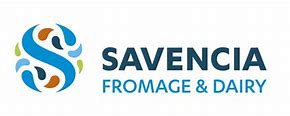Summary
The French market for terroir products, in particular those under SIQO (signs of quality and origin), remains dynamic, with solid growth in various sectors. More than 1,100 SIQO products generated sales of 34 billion euros, with wines and eaux-de-vie accounting for 23 billion euros. The cheese segment, for example, saw household consumption of PDO/AOC cheeses reach 1.52 billion euros. The market structure includes a variety of players, from local producers to agri-food giants.
Labels such as AOC, IGP and Label Rouge play an essential role in guaranteeing product quality, helping products achieve a higher average price than their non-labeled counterparts. French consumers are showing a keen interest in local products, and a growing preference for products with proven quality and origin.
Despite this, the text does not provide specific data from 2020 onwards, so we cannot determine recent trends. However, demand for authentic, quality local products is likely to remain steady or even increase, in line with trends in previous years and given consumers' general interest in food quality and the cultural importance of "terroir" products in France.
French market trends and analysis of traditional local products
The French market for traditional local products, known as "produits du terroir", encompasses a variety of label products, in particular those under SIQO (signs of quality and origin identification), which reflect cultural gastronomy deeply rooted in the terroir. The market has been buoyant in recent years, driven by French consumers' growing demand for quality and origin in food products. This public interest is reinforced by their strong affinity with the preservation of the national gastronomic tradition. The market for these label products is particularly dynamic, with wines leading the way.
Labeled wines alone account for 92% of all wines sold in the country, testifying to their dominant market position. In terms of sales, these wines exceed the 20 billion euro mark, demonstrating the economic importance of label products in France. Overall, labelled products in different categories show steady growth, with significant appreciation in value in some sectors such as charcuterie and the seafood industry, despite a decrease in volume for the latter. Consumers have a high level of confidence in these labelled products; almost a quarter of them consider these labels to be an essential confidence factor, while around 42% regard them as a prime indicator of product quality. This inherent confidence correlates with consumer habits, as household consumption of labelled products tends to increase almost everywhere, contributing billions to the economy, with cheese, butter and cream consumption being notable examples.
Geographically, label and quality indicators such as AOC and AOP are highly concentrated in certain regions, with Côte d'Or and Saône-et-Loire leading the way. These regional disparities may reflect specific terroir characteristics or historical cultivation and production practices.
In terms of purchasing preferences for local produce, markets remain the most popular channel, underlining French consumers' preference for freshness and direct relationships with producers. Direct sales from producers are also an important channel, reflecting the local and traditional essence of these products.
In short, the market for traditional French local products stands out not only for its high demand and diversity of supply, but also for an emblem of identity and quality that resonates deeply with French consumers. This market, which covers segments from wine to dairy products to meat, represents sales of between 15 and 20 billion euros, affirming the economic vitality and consumer commitment to French terroir.
Embodying the essence of French gastronomy with products deeply rooted in local traditions and quality, the French terroir market is home to a wide range of key players who have significantly shaped the industry's landscape. Below, we explore some of the key companies that contribute to the richness and diversity of the French local produce market.
Meat and charcuterie operators
- Delpeyrat: Founded in 1890, Delpeyrat is a venerable name in the French charcuterie and delicatessen sectors, renowned for its high-quality charcuterie products, including the famous Bayonne ham.
- Maïsadour: A French cooperative group, Maïsadour has an extensive market presence, offering a wide range of products from foie gras to charcuterie, and celebrating local flavors and artisan know-how.
- St Sever: Recognizing the importance of traditional poultry farming, St Sever has earned its reputation by producing top-quality poultry products with an emphasis on taste and quality.
- LDC: With a commitment to quality, LDC is a major player in the poultry sector that prides itself on its dedication to animal welfare and sustainable farming practices.
- Labeyrie: Known for its gourmet offerings, Labeyrie targets the luxury segment with its fine smoked salmon, foie gras and assorted charcuterie.
- Comtesse du Barry: Focused on gourmet products, Comtesse du Barry enjoys a prestigious reputation for its terrines, pâtés and other delicatessen products.
- Ducs de Gascogne: A blend of tradition and innovation, Ducs de Gascogne offers a contemporary take on classic French charcuterie, drawing on the rich culinary heritage of the Gascony region.
Dairy producers and cheese lovers
- La cloche à fromage: As a supplier of fine cheeses, La cloche à fromage is a destination for those seeking the highest quality and widest variety of French and international cheeses.
- Savencia: A global player in the dairy sector, Savencia Fromage & Dairy focuses on the creation of exceptional cheeses and dairy products, and is renowned for its specialty and branded cheeses
Beverage and wine specialists
- Vins sur 20: A specialist in the wine trade, Vins sur 20 selects and offers top-of-the-range wines, ensuring that every bottle
to understand this market
Detailed content
 Inforamtion
Inforamtion
- Number of pages : 30 pages
- Format : Digital and PDF versions
- Last update : 08/11/2020
 Summary and extracts
Summary and extracts
1 Market overview
1.1 Presentation and definition
Produits du terroir refers to food products considered to be an integral part of French gastronomy, with a traditional, local component. The terroir products market is characterized by product diversity (dairy products, meats, fruit and vegetables, etc.) and a large number of players with high competitive intensity (private labels, agri-food giants, local producers, innovative SMEs, etc.).
Faced with an ever-increasing number of new entrants, established players in the local produce market are focusing on diversifying their offer and exporting their products, particularly to emerging markets (Brazil, Russia, India, China, South Africa, etc.).
The challenge for players in the local produce sector remains to gain recognition from the general public, following in the footsteps of the great names in delicatessen. Obtaining a PDO designation or a specific reputation sends out a strong signal and sets them apart from the competition. This study therefore focuses on labelled local products, under SIQO (sign of identification of quality and origin). This market for labelled local products is a very buoyant one in France, driven by a demand that is increasingly oriented towards demanding standards of quality and origin for the products consumed, as well as by the French people's attachment to the products of their national terroir.
1.2 The French market for local produce
It's difficult to define the precise scope of "produits du terroir", but here we'll be focusing mainly on label products, and in particular SIQO (***). Indeed, these labels are intrinsically linked to characteristics close to what is meant by "terroir": origin, quality, traditional recipe or know-how.
In ****, there were more than *,*** SIQO ...
2 Demand analysis
2.1 French interest in local products
The French, more than most of their European neighbors, show a genuine interest in the products of their terroir. In fact, in ****, **% of French people said they were interested in local products, compared to just **% in the UK and **% in Germany.
Interest in terroir products among European consumers Europe, ****, % (***) Source: ****
This ...
2.2 A guarantee of confidence and quality
Labels illustrate a commitment to quality and trust: thus, in ****, **% of French people placed product labels among the main levers of trust. For **% of French people, over the same year, the label was even the third most important criterion in terms of product quality (***).
Confidence drivers France, ****, % (***) Source: ****
Criteria guaranteeing product ...
2.3 Household consumption of label products
Household consumption of label products is growing across almost all products: in the case of cheeses, for example, household consumption of PDO/AOC cheeses reached *.** billion euros in ****.
French household purchases of AOC/AOP cheeses France, ****-****, in billions of euros Source: ****
Purchases of PDO butter by French households France, ****-****, ...
3 Market structure
3.1 Geographical structure of labels
Geographically, labels are highly concentrated in a few regions and departments. For example, in terms of AOCs and AOPs, the Côte d'Or has *** labels, compared with *** for second-placed Saône-et-Loire. The other départements are far behind these two leaders, with ** AOC/AOPs for Yonne, ** for Bas-Rhin and ** for ...
3.2 The different sectors
The meat and charcuterie sector
Label beef and beef products: in ****, production totaled **,*** tons (***), for sales of *** million euros **,*** breeders *** slaughterhouses *,*** organic breeders
Label beef production by type of label France, ****, % Source: ****
Label sheep meat: in ****, production totaled **,*** tons (***), for sales of *** million euros *,*** breeders ** slaughterhouses *,*** organic farmers
Label sheep production ...
3.3 Distribution
In the cheese segment, for example, PDO cheeses are bought * times more in specialist outlets (***).
Cheese distribution by channel France, ****, % (***) Source: ****
When it comes to local products more broadly (***).
Preferred channels France, ****, % of total Source: ****
4 Offer analysis
4.1 The different labels of origin and quality
Labels of origin and quality, as previously mentioned, are one of the key drivers of consumer confidence in food products. In France, the label nomenclature is managed by INAO (***). [***]
Today, there are * distinct labels:
Appellation d'origine (***) : this label designates a product whose production respects recognized stages and know-how, in a defined ...
4.2 Labelled products are more highly valued than the market
Because their production requires compliance with very strict specifications guaranteeing quality and confidence, the average price of label products is higher than that of the market. For example, the average price of a kg of PDO cheese in **** was €**.**, compared with €*.** for non-PDO cheeses. The same applies to butter and cream, ...
5 Regulations
5.1 The main principles of food hygiene in France
All foodstuffs are subject to the general provisions of the French Consumer Code in terms of conformity (***).
Several regulations establish the legislative basis for food hygiene in France:
Regulation n°***/**** on the general principles and requirements of food law[***] Regulation n°***/**** on the hygiene of foodstuffs[***] Regulation n°***/**** laying down specific ...
5.2 The impact of the EGAlim law
The EGAlim law, or Loi pour l'équilibre des relations commerciales dans le secteur agricole et une alimentation saine et durable, passed on October *, **** and promulgated on November*, ****.
The objectives of this law are as follows:
Relaunch the creation of value in agriculture and agri-food and ensure its proper distribution Enable ...
6 Positioning the players
6.1 Segmentation
Meat and charcuterie :
Delpeyrat Maïsadour St Sever LDC Labeyrie Comtesse du Barry Ducs de Gascogne
Dairy products, cheese :
La cloche à fromage Savencia
Beverages and wines :
Vins sur ** Inter Caves
Foodservices :
Sodexo Elior
 List of charts
List of charts
- Sales of label products
- Sales of production marketed under SIQO
- Share of label products by volume
- Growth in SIQO products by category
- Share of labels in marketed food production
All our studies are available online in PDF format
Take a look at an example of our research on another market!
Latest news
Companies quoted in this study
This study contains a complete overview of the companies in the market, with the latest figures and news for each company. :
 Choosing this study means :
Choosing this study means :
Access to more than 35 hours of work
Our studies are the result of over 35 hours of research and analysis. Using our studies allows you to devote more time and added value to your projects.
Benefit from 6 years' experience and over 1,500 industry reports already produced
Our expertise enables us to produce comprehensive studies in all sectors, including niche and emerging markets.
Our know-how and methodology enable us to produce reports that offer unique value for money.
Access to several thousand articles and paid-for data
Businesscoot has access to all the paid economic press as well as exclusive databases to carry out its market research (over 30,000 articles and private sources).
To enhance our research, our analysts also use web indicators (semrush, trends, etc.) to identify market trends and company strategies. (Consult our paying sources)
Guaranteed support after your purchase
A team dedicated to after-sales service, to guarantee you a high level of satisfaction. +44 238 097 0676
A digital format designed for our users
Not only do you have access to a PDF, but also to a digital version designed for our customers. This version gives you access to sources, data in Excel format and graphics. The content of the study can therefore be easily retrieved and adapted for your specific needs.
 Our offers :
Our offers :
the market for local products | France
- What are the figures on the size and growth of the market?
- What is driving the growth of the market and its evolution?
- What is the positioning of companies in the value chain?
- Data from several dozen databases
Pack 5 études (-15%) France
- 5 études au prix de 75,6€HT par étude à choisir parmi nos 800 titres sur le catalogue France pendant 12 mois
- Conservez -15% sur les études supplémentaires achetées
- Choisissez le remboursement des crédits non consommés au terme des 12 mois (durée du pack)
Consultez les conditions du pack et de remboursement des crédits non consommés.





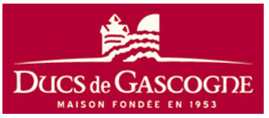 With Qua Terra, Webhelp founder sets his sights on the food sector - 20/01/2024
With Qua Terra, Webhelp founder sets his sights on the food sector - 20/01/2024
 Labeyrie to close its Boulogne-sur-Mer plant - 25/11/2023
Labeyrie to close its Boulogne-sur-Mer plant - 25/11/2023
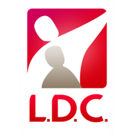 Loué poultry conquers the Polish market - 23/11/2023
Loué poultry conquers the Polish market - 23/11/2023
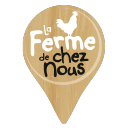 La Ferme de chez nous accelerates the rollout of its store network - 05/09/2023
La Ferme de chez nous accelerates the rollout of its store network - 05/09/2023
